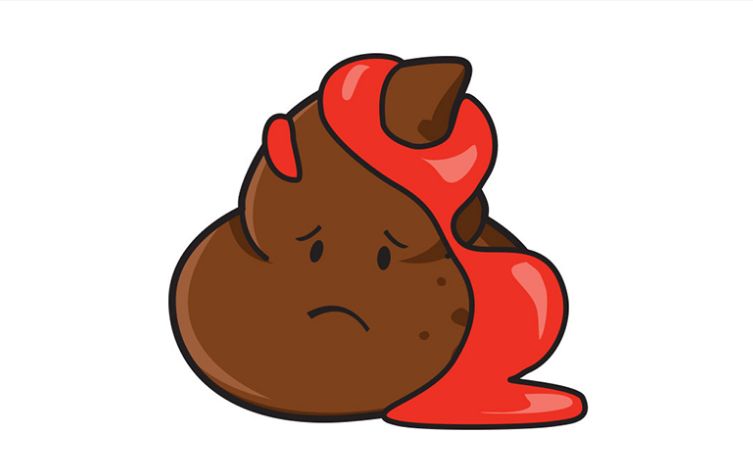
Main causes and how to treat it.
As unpleasant as it may seem to us, checking the poop of our dogs is something necessary. Your stool can give information about your state of health , changes in consistency, color and frequency, they can be altered when there is a disease.
Seeing blood in dog feces can be alarming. It is a symptom of a wide range of conditions and although some can be more serious than others, it is important to know what to do. We share with you what to do when you find blood in your dog’s poop, according to specialists from the American Kennel Club .
The first thing to do if you find blood in your dog’s stool, whether the stool is firm or diarrhea, is to call a specialist. There are two blood types to identify for description to the vet:
1. Hematochezia
It is bright red blood . This type of bleeding indicates that it is occurring in the lower digestive tract or in the colon.
It looks dramatic, but it’s not always a sign of a life-threatening disease. If you notice a red bloody stool in your dog’s stool and the rest of his stool is normal, it could be a fluke. Constant bleeding or large amounts of blood, on the other hand, indicate a more serious problem. In either case, you should go to the vet.
Most common causes are:
- Colitis
- Parasites, such as hookworms
- Trauma
- toxins
- inflammatory bowel disease
- Infections or impactions of the anal sac
Serious conditions :
- viral and bacterial infections
- parvovirus
- hemorrhagic gastroenteritis
- Cancer
2. Mane
This is dark, sticky and almost gelatinous. Its appearance tells us that it has been digested, indicating a problem in the upper digestive tract.
Dark, tarry stools are often more difficult to notice than bright red blood. Some dogs have darker stools than others, depending on diet and other factors. If your dog’s poop looks darker than normal or shows major changes in appearance, it’s time to be alarmed.
Possible causes of melena in dogs include:
- parasites
- inflammatory disorders
- infections
- Ulcers
- tumors
- Foreign bodies and trauma
- Renal insufficiency
- exposure to toxins
- Addison’s disease
- liver disease
- pancreatitis
- hormonal imbalances
- Coagulation disorders
- Reaction to certain medications, such as anti-inflammatory drugs.
If the dog has one of these conditions, it will possibly show other symptoms. Being alert to changes in appetite, activity levels, and attitude can help treat the situation quickly.
Diagnosis
A series of tests will be needed to determine the cause of the bleeding, such as a fecal exam and possibly a blood test. If the dog is not vaccinated and you think it may have been exposed to parvovirus, it is essential to immediately isolate it and see a doctor.
Now that you know the possible causes of bloody stools and how to describe your dog’s condition, it’s important not to forget to contact your veterinarian as soon as possible. Once the corresponding tests have been carried out and the cause of the bleeding has been identified, a specific treatment will be given according to the condition. The solution can range from rehydration, the use of antibiotic medications, to the need for surgery.